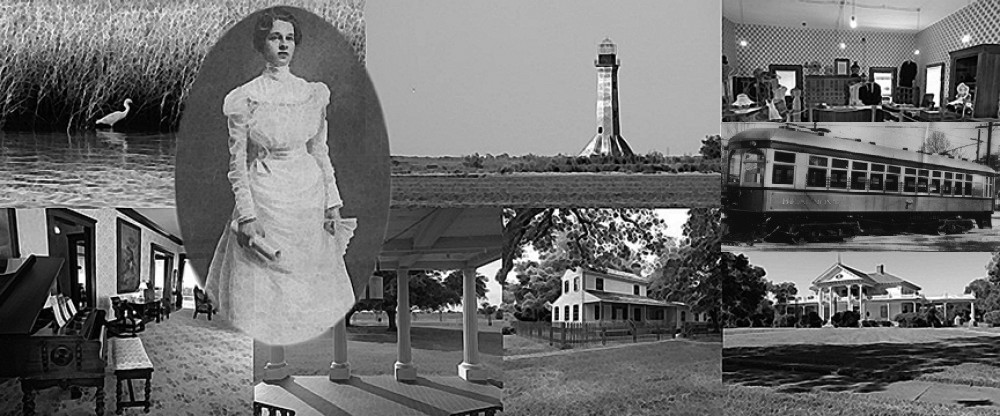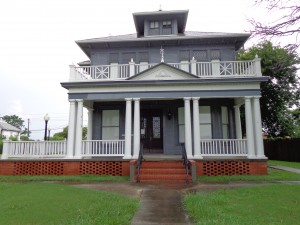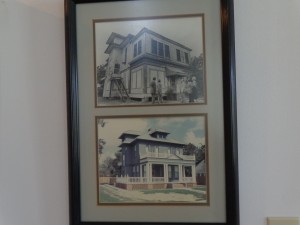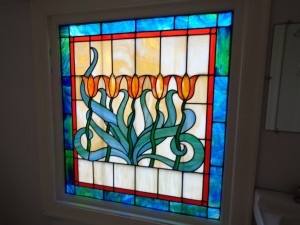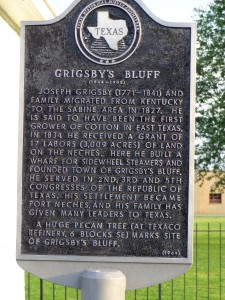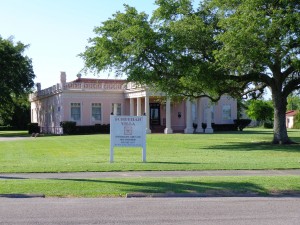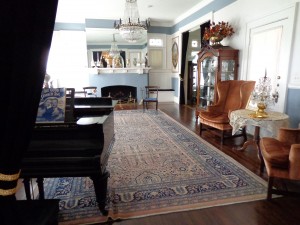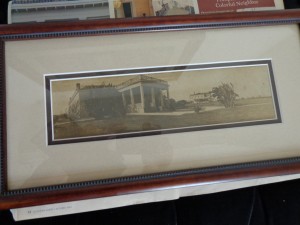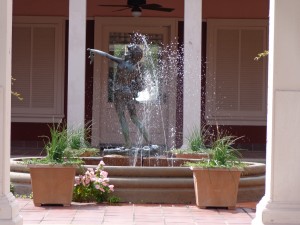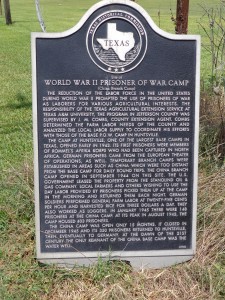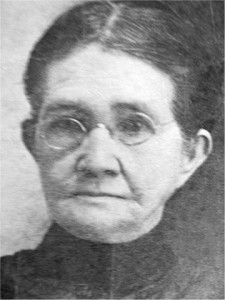On the opening day of the 38th Annual Galveston tour of Homes, the weather could not have been any better. It was a bit warm on this May spring day but the nice breeze made up for it. From Port Neches I made my way across the Bolivar Peninsula admiring all the newly constructed beach houses that have been replaced since Hurricane Ike devastated all of Southeast Texas September 13, 2008. I stand in awe of all the people of our little space on the planet and how they faced their devastation head on. Most here not only returned their life and property back to what it was before but enhanced and bettered their way of life. That goes out to those affected by that hideous storm.
I arrived at the ferry just after 9:40 am. Luck seemed to be on my side as I drove up and was motioned to board the vessel. The tour would start at 10am sharp and I didn’t want to be late because I knew it would be crowded on the first day. I wanted to see as much as I could because I didn’t know if I would be able to finish the tour the following week.
The ferry ride was swift. I disembarked and headed to the first home. While driving I realized I had the ticket, the receipt for the ticket, but I had no idea where the homes were, nor the addresses of any of them. Oops, luckily the android phone deemed itself worthy and I found the closest address to begin my tour.
Note that I will only be giving the historic names and not the addresses since all the properties are privately owned. If you want an in depth version please go to their website at: http://www.galveston.com/ghfhomestour/
At the beginning of the tour I found myself waiting in line for a short time, with no fault to the volunteers. There were plenty of anxious people ready for the tour and I admit I was one. I had taken the tour the year before and was utterly hooked into the history of what these precious dwellings had to offer. Of course this year’s tour was no exception.
The August J. Cottage was built in 1897 by its namesake. August was a real estate broker of German descent. I enjoyed the nice porch, the stained glass, and just a feeling of brightness the house emitted. The current owner has done a wonderful job of keeping this property grand and it was a joy to visit.
The next treasure on the list was the Josephine Drouet House, circa 1898. This house was built after the death of her husband Sebastian Drouet. Through the years it had been moved several times finally settling at its current location and having a total renovation in 2005.
Most of the houses on the tour had similar features. The longleaf pine floors, the glass window atop of doors (This always makes me think back to my time spent at St. James school, Port Arthur, Texas), the stained glass, and the brightness of the rooms. With every tour I found myself yearning to relocate or at least to have a second residence, one day, on the island. This unfortunately is a dream that will not be met in the near future but one can dream can’t one?
My next tour was through the Louis and Magaret Wenzel Cottage circa 1870, and the Robert and Carrie Palliser House, circa 1895. Both were a pleasure to walk through. I noticed on these tours that the first floor was usually referred to as the basement. Most of the residents made excellent modern hideaways out of their basements/ first floor to which I was envious.
As I waited in line for the next tour, I flipped through the Galveston Historic Homes Tour Guide. I learned about their Bike tour, their Tree Sculpture tour (Which I have never taken but have seen some of the sculptures and it would be a tour worth taking). I learned there would be Mint Julep’s at the Menard House on May 12th. At the end of the page there was small advertisement for the 1838 Menard House. Galveston’s oldest surviving residential home will offer ticket holders a Special $5 only on May 5th.
I have been trying to explore the Menard house for over a year and was determined to accomplish my goal, but first the Christian Wolfer Tenant Cottage, circa 1891 was to be explored.
As the line drew nearer I finally made it to the porch. The volunteer explained the history of this house and the recent devastation it sustained from Hurricane Ike. The house was moved 17 blocks to its current location and was completely restored in February 2010. This house is known as the Green Revival House. The guide stated that this house was the first historic building in the nation to be certified LEED for homes platinum. (LEED= Leadership in Energy and Environmental Design)
I was told before entering I needed to take my shoes off. The current owners didn’t want people walking through their abode with shoes. I do know some cultures do not allow the wearing of shoes in their homes, but in this case the volunteers all had shoes on. The floors were the same as the others. There were no expensive rugs or anything that I saw that my shoes would be detrimental toward. All the same it was a short tour and found it odd to walk through a house with 9 other people shoeless. While writing this on Saturday the 12th I can only gather that the owners of this dwelling were having an anxiety attack with all the rain that has fallen on a tour day. That’s a bunch of wet feet.
As I put my shoes on and hurried to my truck I was truly excited for my next endeavor. The Menard House is the oldest house in Galveston and a dwelling rich Texas history. It was built in 1838 by Michel B. Menard, one of the founders of City of Galveston. The house was used as his residence and office for real estate purchases. It is now rented out for public events and open to self-tour on certain occasions, such as days of lectures, or other events in the nearby Hall.
One of the pluses of this house was being a self-tour. Since it was off the beaten path and not part of the regular home tour there were no lines. I would pay an extra $5 extra for no lines. Another plus was how they have put some of the historical artifacts on display along with a description of the period.
To my knowledge there are no normal hours of operation for set tours. In all, this house for me was a joy that I intend to learn more about its history and attend their lecture series starting in June.
One thing I did find out on this tour was that as the old song goes 1 may be the loneliest number but it will get you to the head of the line on a tour. I was the 15th person back in line waiting to tour the John L. Darragh Tennant House, circa 1886, I heard one of the volunteers say there was room for one more on the current tour. She called out for anyone touring alone. Luckily I fit the bill and skipped ahead, saving me at least 30 minutes.
This was my second favorite house of the tour. There is also a gated park/garden accompanying this house. Here I found out the woes of a volunteer for this type of tour. I have volunteered a few times and do not have the knowledge of how things work yet. I do know business, and what happens when employees/ volunteers don’t show up. The whole scenario at this house was a bit tense. Volunteers, if I have gotten my facts straight, were to do 3 hour shifts. Let’s just say you have 6 volunteers at any time in the house. This would make 12 volunteers per house times 10. That would make the total of at least 120 volunteers. This is a huge task to put on and it makes me appreciate the planning, the volunteers, and the sheer determination of putting on a tour on this scale.
Upon leaving the Darragh Tennant House I looked at the map and noticed the next house was 2 and a half blocks away. I proceeded to walk to the next property, which was the Louis and Anita Runge House circa 1916. This house was a bit more elegant than the previous 8 that I viewed.
As I walked up the stone steps to the front door I noticed a volunteer becoming worried about one particular visitor for the next tour. This woman was making her way in line aided by a walker. He knew that she would have trouble maneuvering through the house and took it upon himself to find a solution to help her.
Note that this tour, although environmentally friendly really cannot possibly be made easily accessed for the handicapped. One must remember that these are private dwellings and built in a flood zone. Yes there are stairs and plenty of them.
The woman was on the next tour after me and she did see the house thanks to her will, determination, and the help of a caring volunteer who made it a point to help her up and down the many steps and stairs of this property to explore this amazing home.
After the tour I walked back through the neighborhood to my truck and headed for the final destination on my tour. The McKinney- McDonald House circa 1890 is a restoration in progress. The Galveston Historical Foundation purchased this house in January of 2011 to save it from being demolished because of major fire damage in 1993. It has been vacant and unattended since. It has been gutted, except for the spiral staircase that did not seem to be damaged in the fire, and ready for restoration. I hope to see this property after the restoration is complete.
This concluded my tour of historical Galveston. I felt touring 10 houses in 6 hours was pretty amazing feat. My only regret was that I could not do a pictorial tour and show all the amazing things that these owners have done with the properties, but I do respect their privacy on the matter and thank them for inviting us into their houses (Even if we were not a loud to wear shoes in a certain property.)
As I drove down Broadway, headed to Houston, something caught my eye. While passing Galveston’s historic cemetery I was stunned by all the brilliant color protruding out amongst the old graves. I quickly turned the truck around and headed straight for the cemetery. I don’t know who planted the wildflowers throughout the cemetery, but as you will see in my attached photos, it was nothing more than wonderful. What a way to end a great day of rediscovering some of Southeast Texas’ historical past.
http://www.flickr.com/photos/25032584@N05/sets/72157629616094300/
If you are interested in taking the tour or other tours the Galveston Historical Foundation has to offer please visit their website for details at:
http://www.galvestonhistory.org
